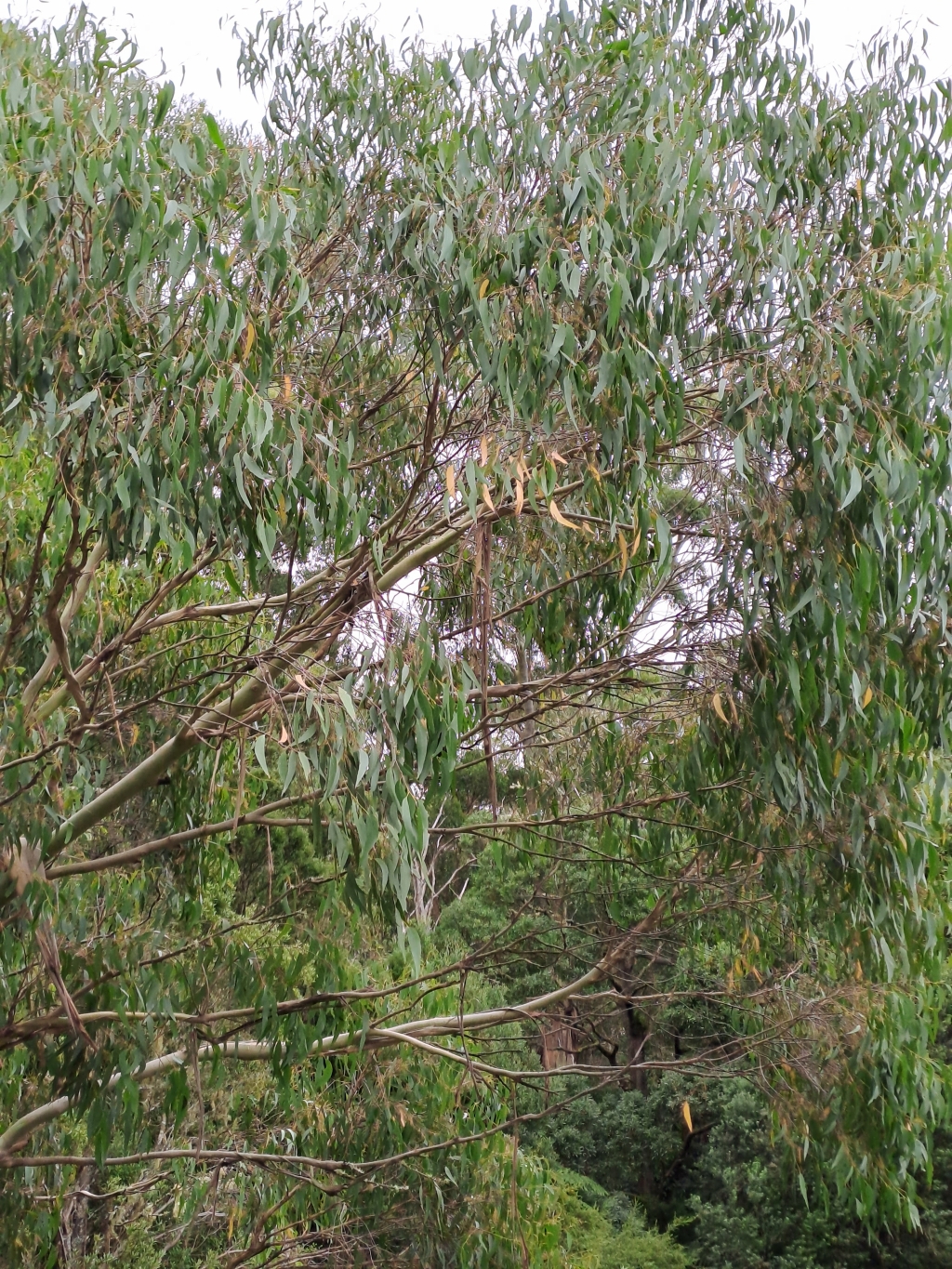Eucalyptus regnans
F.Muell. Mountain AshTree to 90(–100) m tall; bark rough for the basal c. 15 m of trunk, smooth above, with much persistent ribboning in the crown. Juvenile leaves petiolate, opposite for few pairs then alternate, ovate to broadly lanceolate, oblique, held somewhat horizontally, to 17 cm long, 8 cm wide, glossy, green; adult leaves petiolate, alternate, broadly lanceolate to lanceolate, 9–14 cm long, 1.5–3 cm wide, concolorous, glossy, green; side veins often very acute; reticulation sparse, with numerous island oil glands. Inflorescences axillary in pairs, unbranched; peduncles to 1.3 cm long, 9–15-flowered; buds pedicellate, clavate, to 0.7 cm long, 0.4 cm diam., no scar (single operculum); operculum hemispherical, often apiculate; stamens irregularly flexed; anthers dorsifixed, reniform; ovules in 2 vertical rows; flowers white. Fruit pedicellate, obconical or cupular, to 0.9 cm long, 0.7 cm diam.; disc flat usually just below rim; valves 3, rim level; seed brown, glossy, smooth, pyramidal but distorted by one curved face, hilum terminal. Flowers Dec.–May.
VVP, VRiv, GipP, OtP, CVU, DunT, EGU, WPro, HSF, HNF, OtR, Strz, MonT, HFE, VAlp. Also Tas. Occurs in high rainfall, mountainous areas of Victoria in the Otway Ranges, and mountains south of the Great Dividing Range, east from Mt Macedon to Bonang.
Hybridizes with E. obliqua in e.g. the Otway Range and on Wilsons Promontory. Hybrid trees have bark extending higher up the trunk than in typical E. regnans (but not extending into the crown as in E. obliqua). The buds and fruit tend to resemble those of E. regnans more than those of E. obliqua but a range linking the 2 species is known.
Notable for being the tallest hardwood species in the world. It is a green-leaved ash related closely to only E. fastigata.
Brooker, M.I.H.; Slee, A.V. (1996). Eucalyptus. In: Walsh, N.G.; Entwisle, T.J., Flora of Victoria Vol. 3, Dicotyledons Winteraceae to Myrtaceae, pp. 946–1009. Inkata Press, Melbourne.
 Spinning
Spinning

